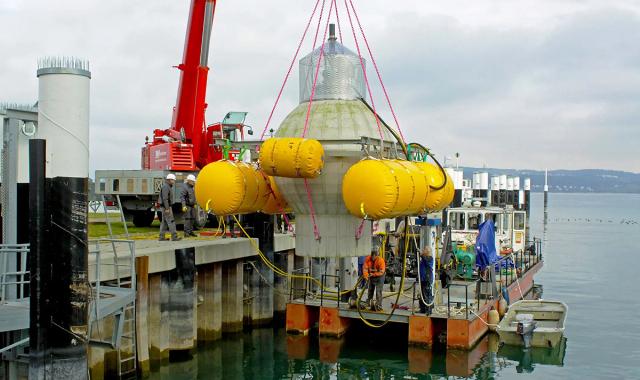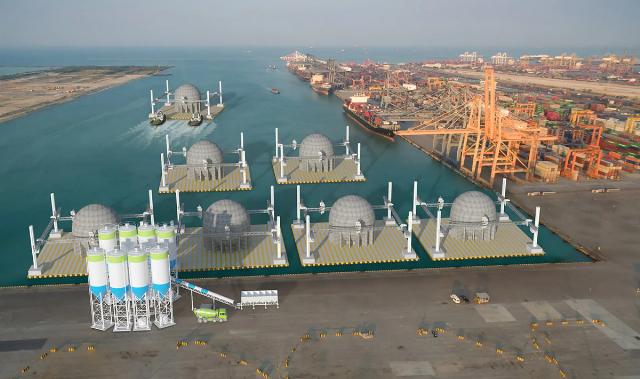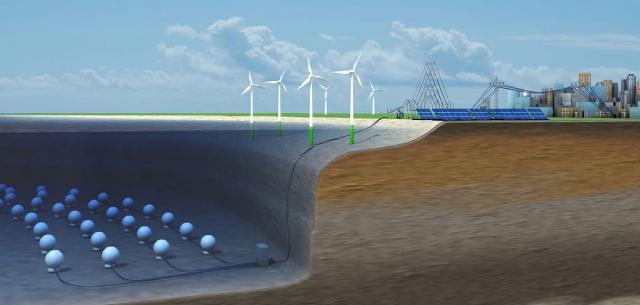
The StEnSea Project
Scientists from the Fraunhofer Institute have successfully tested a prototype of a new underwater energy storage device on Lake Constance. And now they are preparing to create and test a full-scale model together with their American colleagues. The tests are scheduled for 2026, the venue is Long Beach near Los Angeles.
The concept is simple and well-known: water under its own weight fills a sphere of concrete, rotating the turbine of the generator while moving inside. When there is an excess of energy in the network, pumps are turned on that pump water out of the sphere — and so on over and over again. A distinctive feature of this project, which was named "StEnSea", is the choice of storage location.

The StEnSea Project
The spheres are supposed to be placed at depths of 600-800 m so that they do not interfere with navigation in any way and do not affect the fragile ecosystem of shallow waters. Space on land for the construction of renewable energy installations is limited, space for storage devices is also limited, but the coast at such depths is almost empty everywhere. All that remains is to lay the cables and change the spheres about once every 50 years as they wear out. A future test will use a 9 m diameter sphere that can generate 0.5 MW and store 0.4 MWh of energy. In the future, it is planned to create spheres with a diameter of 30 m. If they are placed in all available locations, they will be able to store up to 817,000 GWh. This is enough to compensate for the energy shortage caused by the shutdown of wind turbines and solar panels in Germany, France and the UK combined for a whole year.

The StEnSea Project
The US Department of Energy is interested in the project, which has already invested $4 million in it. This country has a long coastline and many large cities and industries on the coast that need energy. Recent events (the blackout in Spain) clearly show that relying on renewable energy without the ability to store energy is extremely reckless. And the StEnSea project can solve this problem.
Alexander Martynenko
